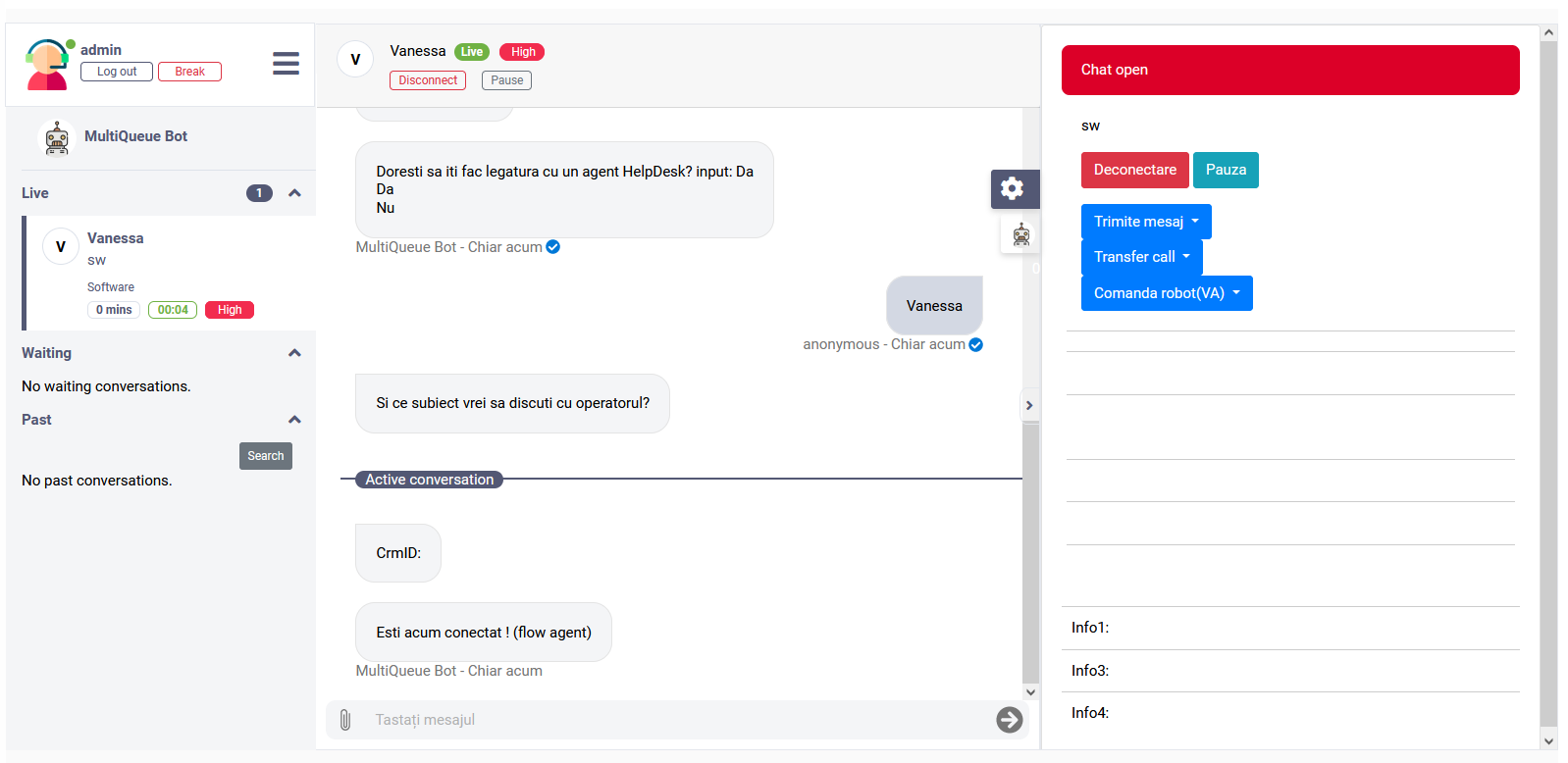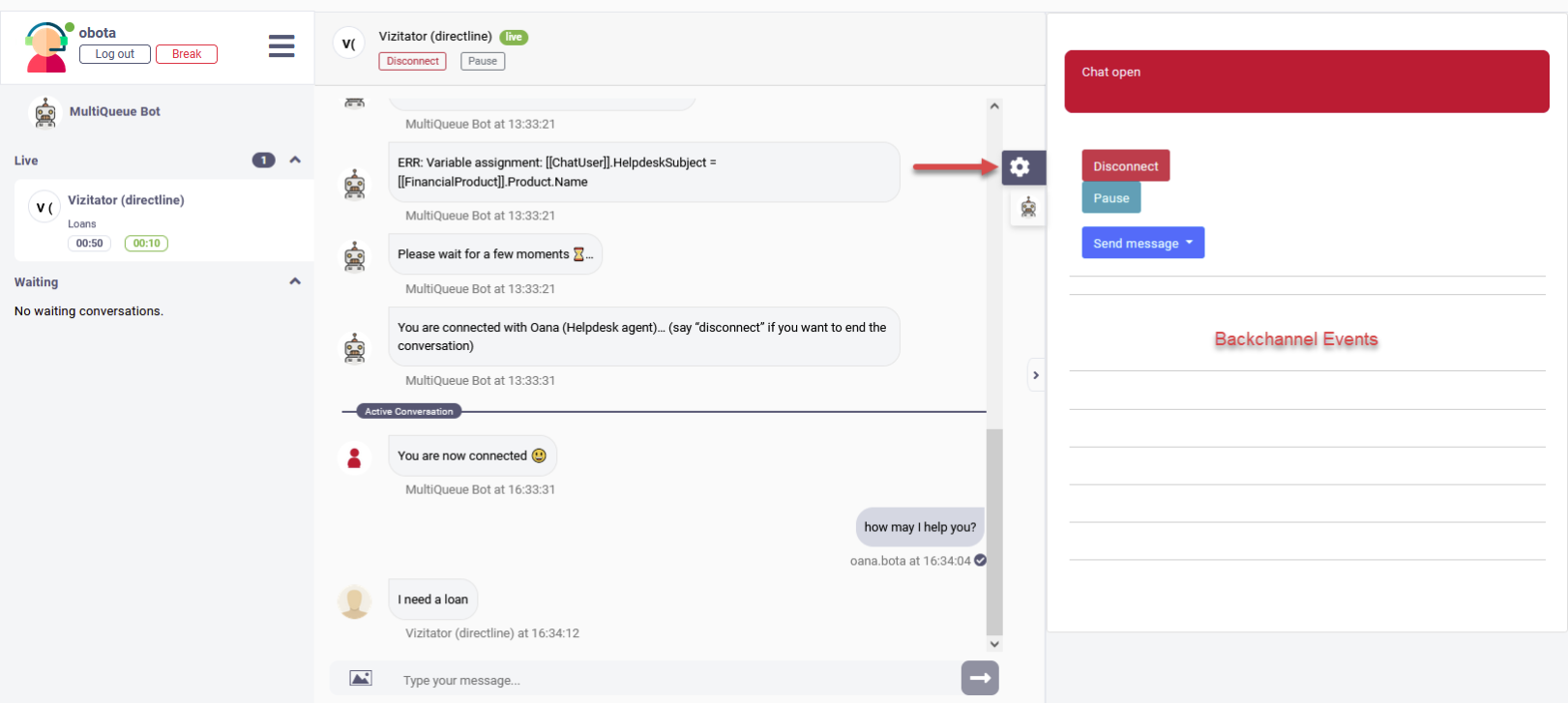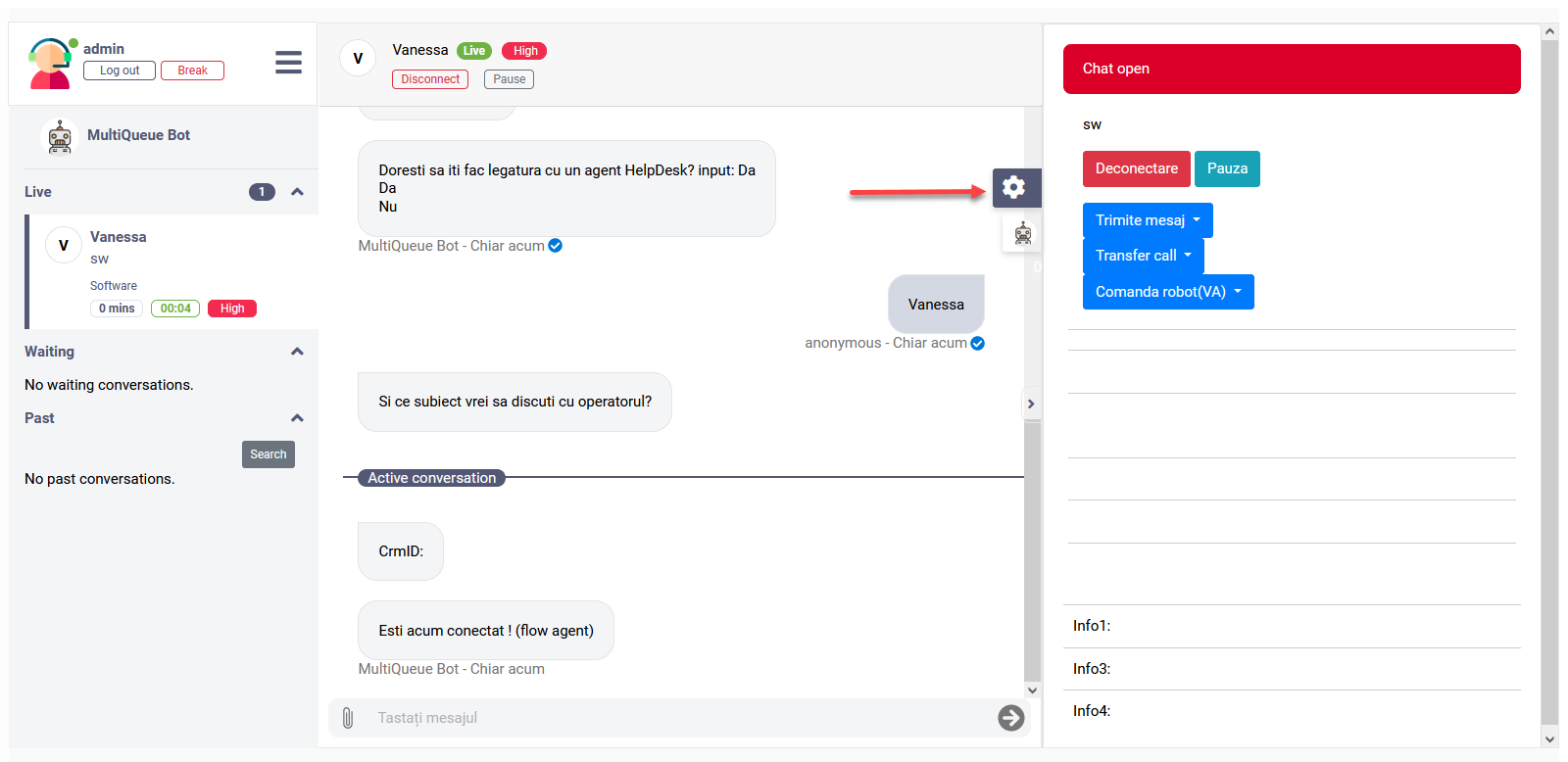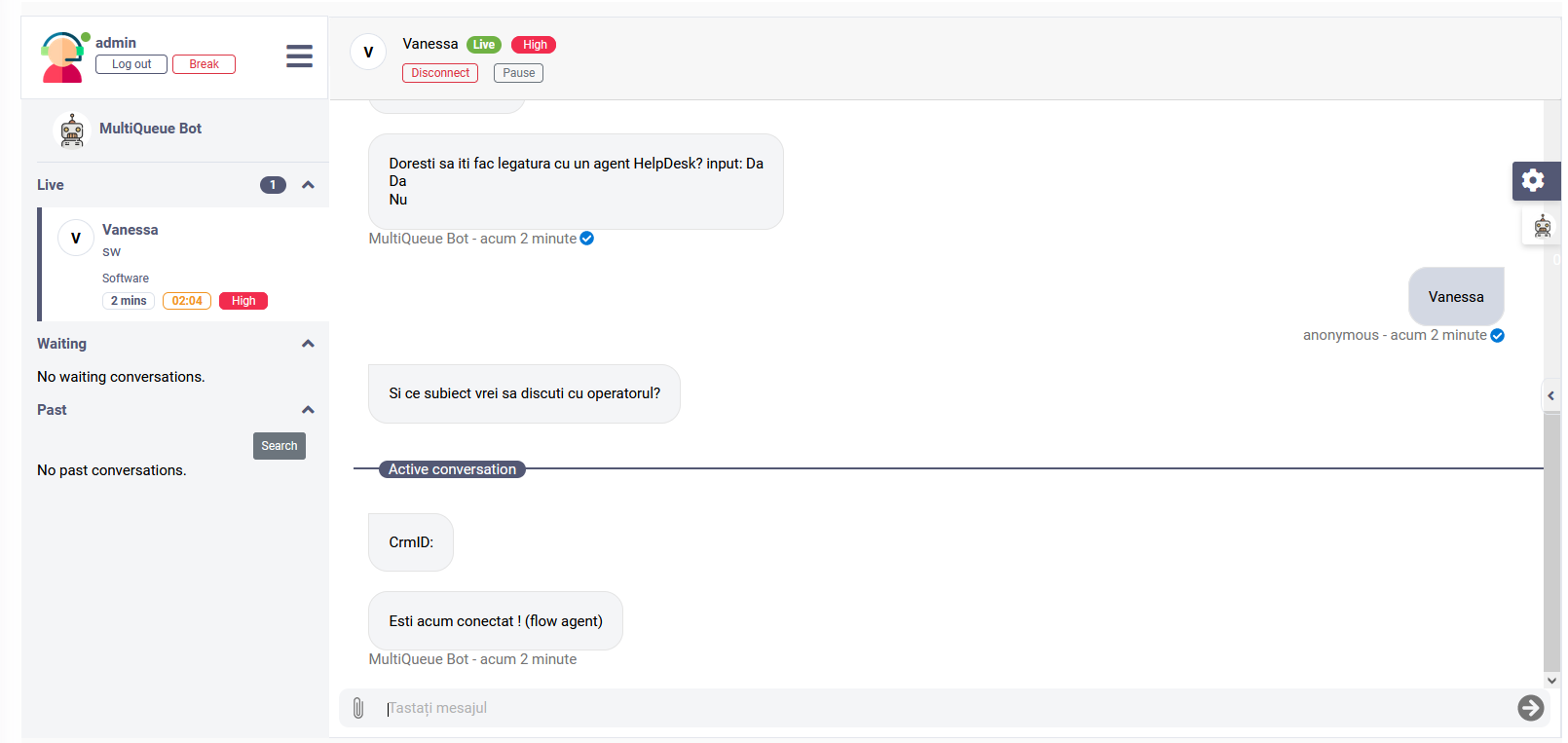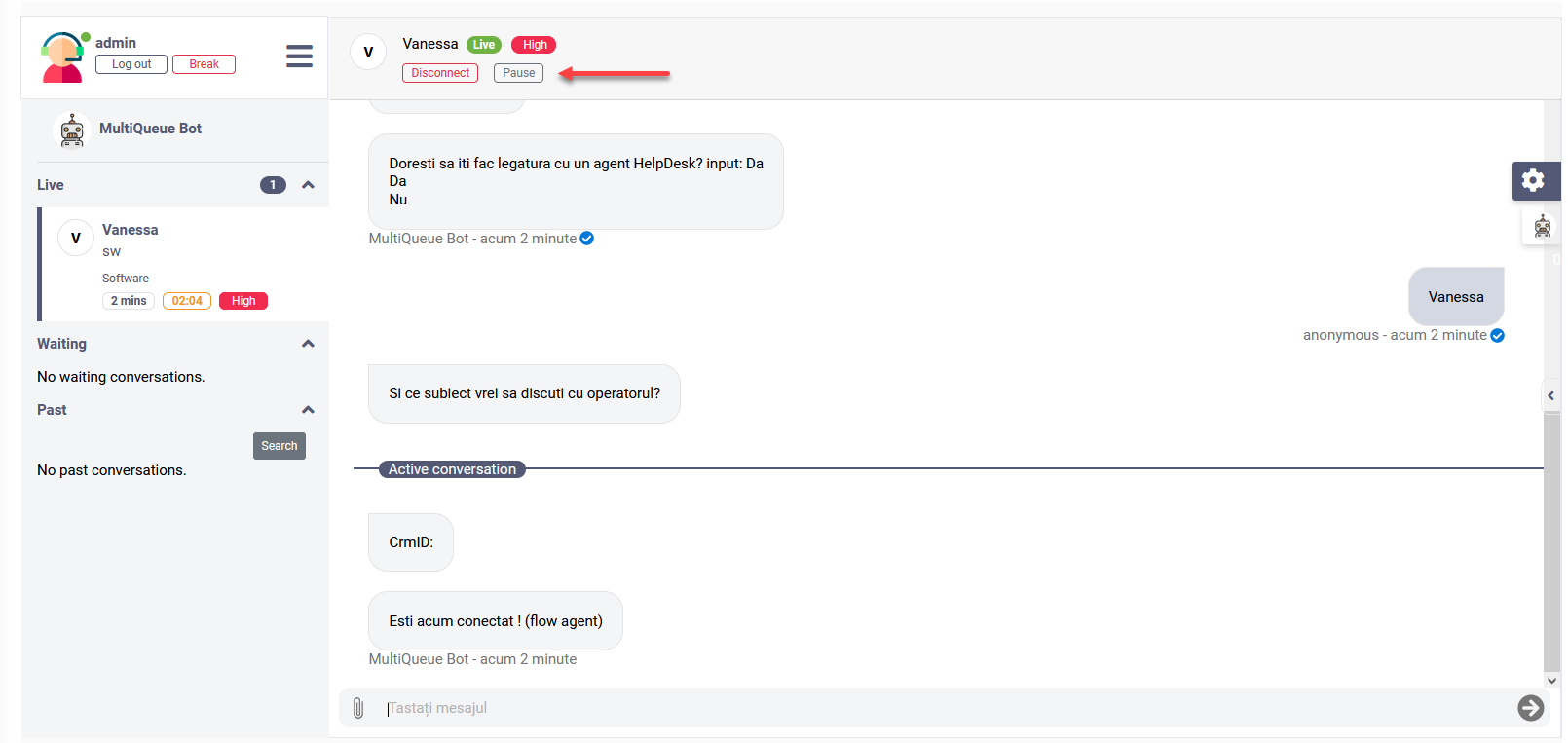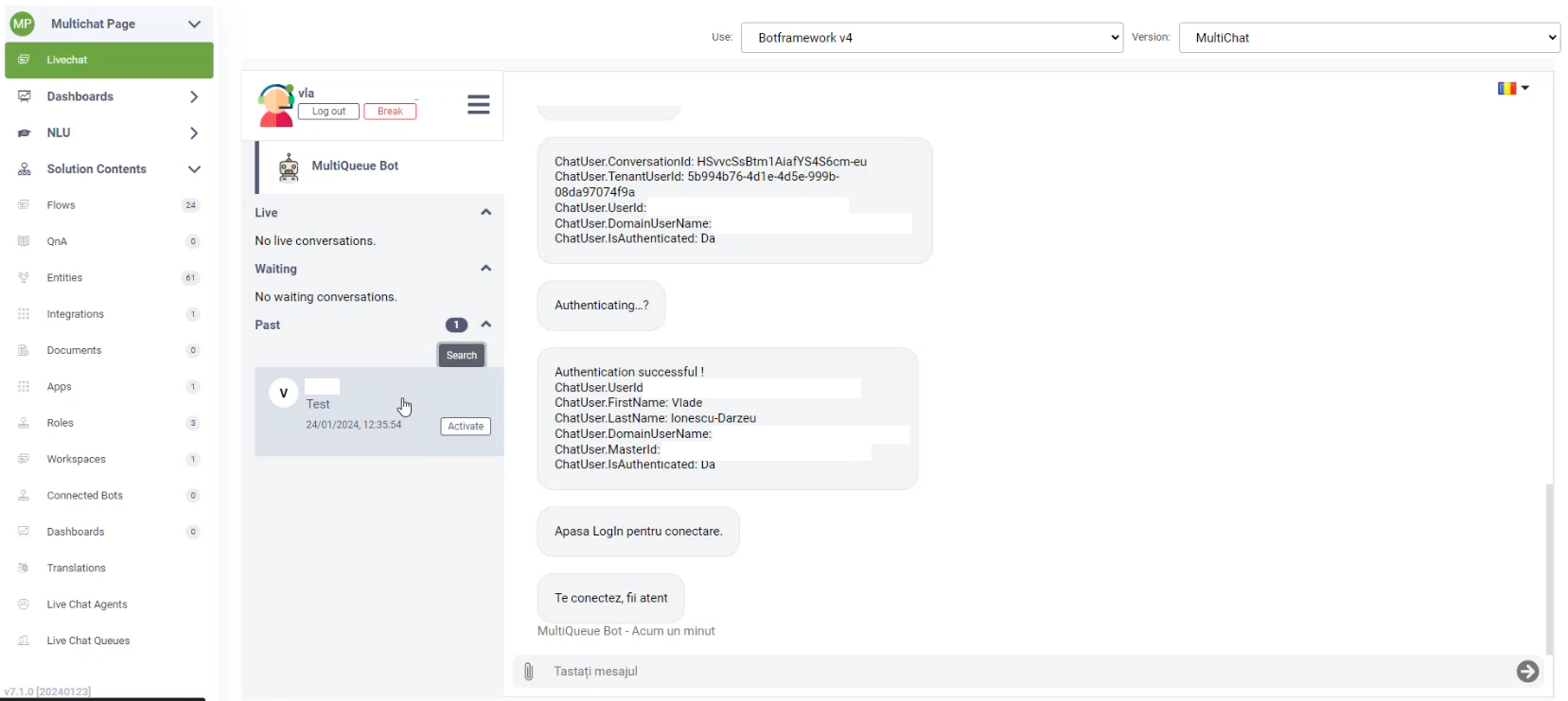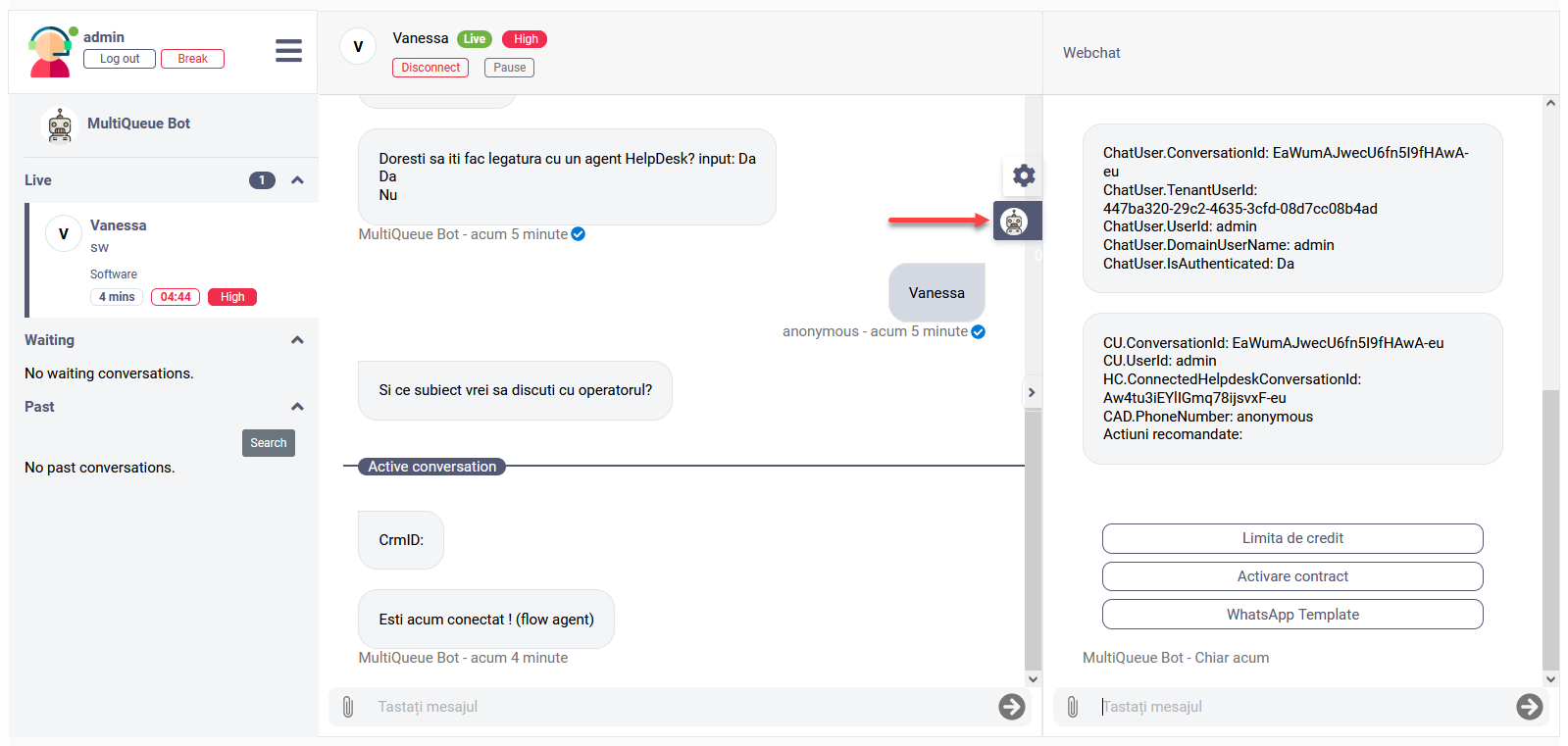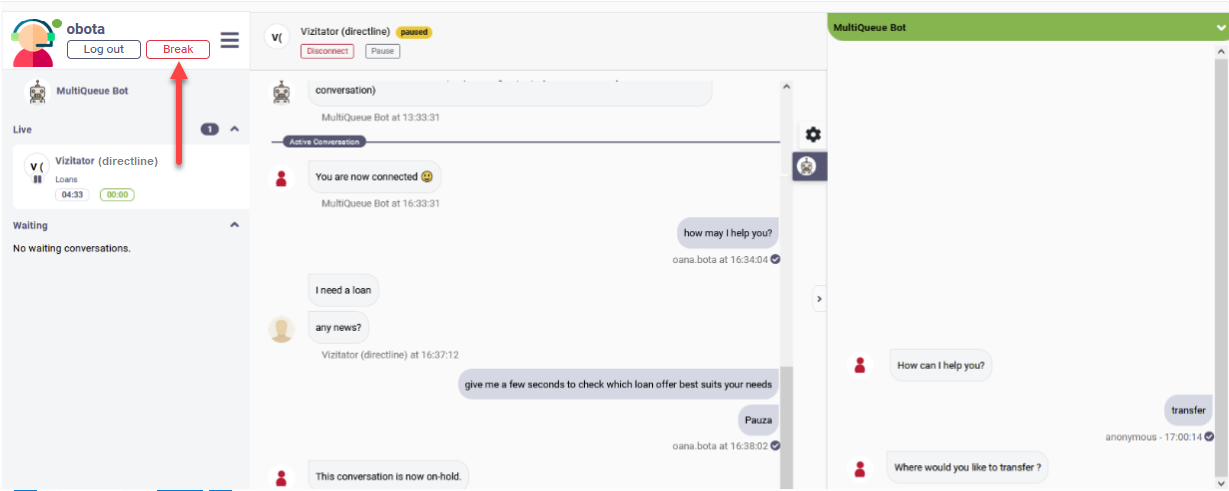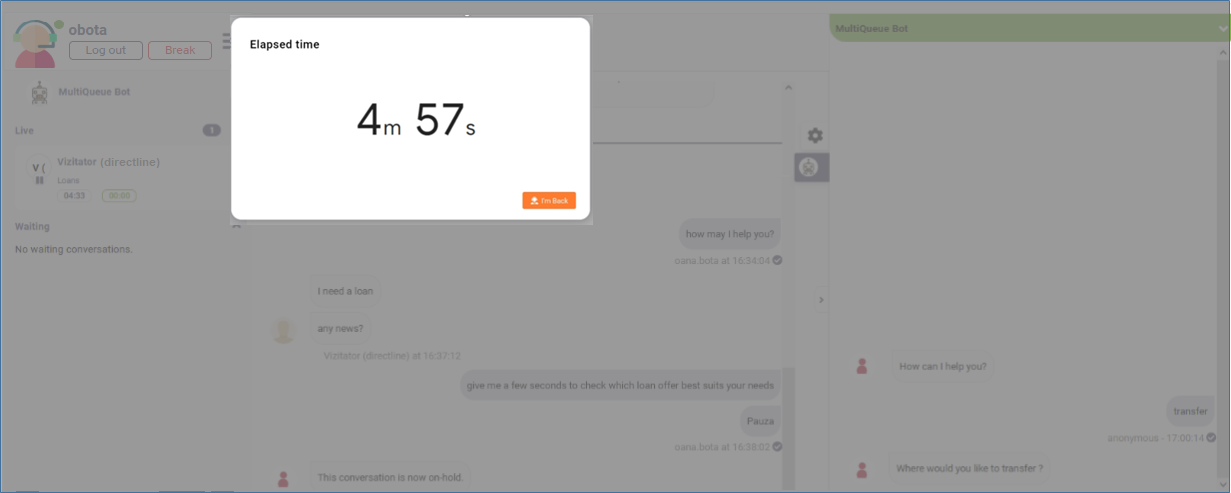Multichat for Helpdesk Agents
The figure below shows Multichat for a helpdesk agent who connected in a live chat session with a client.
Multichat Elements
Multichat contains the following elements:
- The Live conversations and the customers waiting in the queue (if any), on the left.
- The chat area in the middle, which contains the conversation transcript and the currently active conversation.
- Menu options on the right. Two options are available:
- Backchannel events
- Chatbot Assistant. The ChatBot Assistant gives agents the possibility to ask for additional information, perform additional actions or transfer live chat to another queue or agent.
Multichat appears by default with the Backchannel events option selected.
To collapse the right menu, click the  icon on the right.
icon on the right.
The conversation transcript brings the history from the current client chat activity ID. An agent connected in a live chat session with a client will see the client conversation with the chatbot prior to live chat session initiation and the conversation with others agent if the live chat session has been transferred from another helpdesk agent. This enables the helpdesk agents provide better client assistance.
The Active conversation label ( ) separates the conversation transcript from the live conversation between current helpdesk agent and the client.
) separates the conversation transcript from the live conversation between current helpdesk agent and the client.
Pause or disconnect a live chat conversation
During a live chat conversation, helpdesk agents can pause or disconnect the current live chat session by clicking the buttons displayed at the top of the chat area.
The agent can put the conversation on hold only when in live chat conversation by clicking the Pause button. When the agent clicks the Pause button, the LiveChatConversationIdleTimeoutMins clock is put on hold to avoid automatically disconnecting the conversation. The click is reactivated only after the agent clicks again the Pause button and sends a message.
Reconnect with users - taking over past conversations
Reconnecting with users becomes valuable when agents require additional time to perform specific tasks outside the DRUID Platform and need to inform users once these tasks are completed.
Agents can reconnect to past live chat conversations on all persisted channels (WhatsApp, Facebook, Telegram, Viber, GoogleChat, Instagram, Slack, and Twilio SMS) under the following conditions:
- The user is not engaged in a conversation with the bot.
- The channel-specific limit for the last user interaction with the bot has not reached the maximum value (if any). For instance, agents can reconnect to a past live chat conversation within a 24-hour time-frame from the last user interaction.
On the left side of the interface, agents can view their last 20 past conversations. To reconnect to one of these conversations, the agent clicks the Activate button displayed next to the desired conversation.
Upon activating such conversations, user input in the primary conversation with the client is blocked if the last message in the chat is older than 24 hours. This proactive measure ensures agents are informed of the conversation's status, prompting them to send a template message before further engaging with the users.
If an agent wishes to reconnect to a past conversation not listed among the last 20 or to a past conversation of another agent, an advanced search is available. In the Past area, click the Search button and in the Search filters pop-up, enter the filtering criteria, then click the Activate button corresponding to the desired past conversation.
ChatBot Assistant Characteristics
- The conversation with the ChatBot Assistant is unique to each live chat session. This means that the ConversationID is unique for each client.
- To identify a conversation, the chatbot verifies the [[ChatUser]].IsCommandChannel attribute on either the Welcome flow or on the Welcome agent flow.
- The client context data transfers to the context of the conversation between the agent and the ChatBot Assistant; therefore, the Assistant always knows to which client the agent is talking.
The ChatBot Assistant is available as an option on the options menu in every live chat conversation.
While agents are in a live chat session with the client, they can talk to the ChatBot Assistant by clicking on the widget. The widget expands and the agents can tell the chatbot what they need.
ChatBot Assistant Specific JavaScript Functions
You can configure the following JavaScript functions in BackChannel steps (on the client connected flow) which agents can use when chatting with the Chatbot Assistant:
- sendMessage (text). Enable the agent to send predefined messages.
- sendMessageToBot(message) similar with “sendMessage” used on the Disconnect, Pause or Send predefined message buttons.
- changeChatVisibility(isVisible). Set to false to hide the ChatBot Assistant option.
<div class="dropdown-menu" aria-labelledby="dropdownMenuButton">
<a class="dropdown-item" onclick='sendMessage("Thank you for waiting! How may I help you?")'>Thank you for waiting</a>
<a class="dropdown-item" onclick='sendMessage("Thank you for your time. To help us improve the quality of our services please give feedback. Have a nice day!")'>Ask feedback</a>
</div>If you want to provide the agents with the possibility to preview and edit predefined messages before sending them in the chat, then use the following syntax: sendMessage ("text",true).
<div class="dropdown-menu" aria-labelledby="dropdownMenuButton">
<a class="dropdown-item" onclick='sendMessage("Thank you for waiting! How may I help you?",true)'>Thank you for waiting</a>
<a class="dropdown-item" onclick='sendMessage("Thank you for your time. To help us improve the quality of our services please give feedback. Have a nice day!",true)'>Ask feedback</a>
</div>
Example - Transfer
<button type="button" onclick='sendMessageToBot("Transfer")' class="btn btn-danger">Transfer</button>Agents Requesting Breaks
To request a break, an agent will click the Break button displayed on the left, below the agent name.
The agent’s break will start immediately after all live sessions have ended.
If an agent requests a break while having ongoing conversations and decides to cancel the break, the agent can do so by clicking the Cancel button.
While in break, a pop-up displays on screen with a break timer (showing the time consumed in break). The pop-up also contains the I’m back button, which allows the agent to end the break.
Agents Logging out
To log out, an agent will click the Log out button displayed on the left, below the agent name.
If an agent clicks to log out while having ongoing conversations or when engaged in a conversation and automatic allocation is active, a log out request is initiated and the agent will be logged out after all live sessions have ended.
